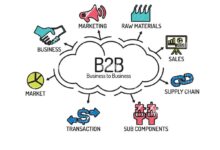B2B Mastery: 7 Powerful Strategies to Skyrocket Your Business Growth
Welcome to the ultimate guide on B2B—where businesses connect, grow, and thrive. If you’ve ever wondered how companies sell to other companies, this deep dive will unravel the mechanics, strategies, and future of B2B with clarity and insight.
What Exactly Is B2B? Breaking Down the Basics

The term B2B, or Business-to-Business, refers to transactions between companies rather than between a company and individual consumers (which is known as B2C). These transactions can include the sale of raw materials, software, services, or wholesale goods that help other businesses operate or deliver their own products.
The Core Definition of B2B
B2B is a commercial model where one business provides products or services to another business. For example, a software company selling CRM tools to an enterprise, or a manufacturer supplying components to an automotive company. Unlike B2C, B2B sales cycles are typically longer, involve multiple decision-makers, and are driven by logic, ROI, and long-term value.
B2B vs.B2C: Key Differences
Target Audience: B2B targets professionals and organizations; B2C targets individual consumers.Sales Cycle: B2B cycles are longer and more complex; B2C is often immediate and emotion-driven.Decision-Making: B2B involves committees and stakeholders; B2C is usually an individual choice.
.Pricing Models: B2B often uses tiered, negotiated, or subscription-based pricing; B2C uses fixed retail pricing.”B2B is not just about selling—it’s about building partnerships that drive mutual growth.” — Forbes
The Evolution of B2B Over the Decades
B2B has undergone a dramatic transformation since the industrial era.What once relied on face-to-face meetings and paper catalogs has now shifted to digital platforms, data analytics, and AI-driven sales strategies..
From Industrial Trade to Digital Marketplaces
In the early 20th century, B2B transactions were largely conducted through trade shows, phone calls, and printed catalogs. The rise of the internet in the 1990s introduced e-procurement systems and early B2B marketplaces like Alibaba. Today, platforms such as LinkedIn and Salesforce have redefined how businesses connect and sell.
The Role of Technology in Modern B2B
Technology has become the backbone of B2B operations. Cloud computing, CRM systems, AI-powered chatbots, and predictive analytics now enable companies to personalize outreach, automate workflows, and forecast demand with unprecedented accuracy. According to Gartner, over 80% of B2B sales interactions will occur digitally by 2025.
Key Industries Dominated by B2B Models
B2B is not limited to a single sector—it spans across industries where business interdependence is crucial. Some of the most prominent B2B-driven industries include:
Manufacturing and Supply Chain
This sector relies heavily on B2B relationships. For instance, a car manufacturer depends on suppliers for steel, electronics, and tires. The entire supply chain operates on B2B contracts, often involving long-term agreements and just-in-time delivery models.
Information Technology and SaaS
The rise of Software as a Service (SaaS) has made IT one of the fastest-growing B2B sectors. Companies like Microsoft and Zoom offer enterprise solutions that help other businesses improve productivity, communication, and data management.
Professional Services and Consulting
Firms offering legal, financial, marketing, or HR services operate primarily on a B2B model. These services are tailored to organizational needs, with pricing based on scope, duration, and expertise required.
How B2B Sales Cycles Actually Work
Understanding the B2B sales cycle is critical for success. Unlike B2C, where a customer might buy on impulse, B2B purchases involve multiple stages, stakeholders, and evaluation periods.
The 6 Stages of a Typical B2B Sales Cycle
Prospecting: Identifying potential clients through research, referrals, or lead generation tools.Qualification: Assessing whether the prospect has the budget, authority, need, and timeline (BANT framework).Presentation: Demonstrating value through product demos, case studies, or proposals.Negotiation: Discussing pricing, terms, and customization options.Closing: Finalizing the contract and securing the deal.
.Post-Sale Support: Onboarding, training, and ongoing service to ensure retention.Why B2B Sales Take Longer
B2B decisions often require approval from multiple departments—finance, IT, operations, and executive leadership.This consensus-building process slows down the cycle but increases deal size and lifetime value.According to HubSpot, the average B2B sales cycle lasts between 2 to 6 months, with some enterprise deals taking over a year..
The Power of B2B Marketing in the Digital Age
B2B marketing has evolved from cold calling and trade shows to sophisticated digital strategies that leverage content, SEO, and social media.
Content Marketing: The Backbone of B2B Strategy
High-quality content—such as whitepapers, case studies, webinars, and blog posts—helps establish authority and nurture leads. For example, a cybersecurity firm might publish a detailed report on emerging threats to attract IT decision-makers. According to Content Marketing Institute, 91% of B2B marketers use content marketing to reach customers.
SEO and Lead Generation in B2B
Search Engine Optimization (SEO) is crucial for visibility. Businesses searching for solutions often start with Google. Optimizing for keywords like “best CRM for small business” or “cloud-based ERP solutions” can drive high-intent traffic. Tools like SEMrush and Ahrefs help B2B companies identify and rank for these terms.
Social Media and LinkedIn as B2B Powerhouses
While platforms like Instagram and TikTok dominate B2C, LinkedIn is the go-to for B2B networking and lead generation. Over 90% of B2B marketers use LinkedIn to distribute content and connect with decision-makers. A well-crafted LinkedIn post or InMail can open doors to high-value partnerships.
B2B E-Commerce: The Digital Transformation
B2B e-commerce is growing rapidly, with global sales expected to reach $20.9 trillion by 2027, according to Forrester. This shift is driven by demand for convenience, transparency, and self-service options.
Why B2B Buyers Prefer Online Platforms
Modern B2B buyers—especially younger professionals—expect the same ease of use they experience in B2C. They want 24/7 access to product information, pricing, and ordering systems. A study by McKinsey found that 73% of B2B buyers prefer to research and purchase online.
Challenges in B2B E-Commerce
Despite its growth, B2B e-commerce faces hurdles such as complex pricing structures, integration with ERP systems, and the need for personalized catalogs. Unlike B2C, where one price fits all, B2B often requires custom quotes, volume discounts, and contract-based pricing.
Top Platforms Powering B2B E-Commerce
- Shopify Plus: Offers scalable solutions for mid-sized B2B businesses.
- Magento (Adobe Commerce): Highly customizable for large enterprises.
- BigCommerce: Built-in B2B features like quote management and account-based pricing.
- Amazon Business: A marketplace that allows B2B transactions with familiar Amazon logistics.
The Future of B2B: Trends to Watch in 2025 and Beyond
The B2B landscape is evolving at an unprecedented pace. Companies that adapt to emerging trends will gain a competitive edge.
AI and Automation in B2B Sales
Artificial Intelligence is revolutionizing B2B sales by enabling predictive lead scoring, chatbots for customer service, and automated follow-ups. AI tools like Salesforce Einstein help sales teams prioritize high-value prospects and reduce manual work.
The Rise of Account-Based Marketing (ABM)
ABM is a strategic approach where marketing and sales teams target high-value accounts with personalized campaigns. Instead of casting a wide net, ABM focuses on a few key companies, treating each as a market of one. This approach has been shown to generate 200% higher ROI than traditional B2B marketing, according to ABM Institute.
Sustainability and Ethical Sourcing in B2B
More B2B buyers are prioritizing sustainability. Companies now evaluate suppliers based on their environmental impact, labor practices, and carbon footprint. This shift is pushing B2B vendors to adopt green logistics, recyclable packaging, and transparent supply chains.
B2B Success Stories: Companies That Nailed It
Real-world examples provide valuable lessons on what works in B2B. Let’s look at a few companies that have mastered the B2B model.
Slack: From Startup to Enterprise Essential
Slack began as a small team communication tool but scaled into a B2B powerhouse by focusing on integration, security, and enterprise features. By partnering with companies like Google and Salesforce, Slack became a central hub for workplace collaboration.
HubSpot: Inbound Marketing Pioneer
HubSpot built its entire B2B strategy around inbound marketing—using blogs, SEO, and free tools to attract leads. Their certification programs and CRM platform have made them a trusted name in B2B marketing automation.
Zoom: Scaling B2B Through Simplicity
While Zoom gained fame during the pandemic, its B2B success was built on reliability, ease of use, and scalable pricing. Enterprises adopted Zoom for webinars, training, and virtual meetings, making it a staple in modern B2B communication.
Common B2B Challenges and How to Overcome Them
Even the most successful B2B companies face obstacles. Recognizing these challenges early can prevent costly mistakes.
Long Sales Cycles and Decision Fatigue
With multiple stakeholders involved, B2B sales can stall. To combat this, companies should provide clear ROI calculations, offer free trials, and assign dedicated account managers to keep momentum.
Customer Retention in B2B
Acquiring a B2B customer is expensive, so retention is key. Strategies include proactive support, regular check-ins, and value-added services like training or consulting.
Data Security and Compliance Concerns
B2B clients, especially in finance and healthcare, demand strict data protection. Companies must comply with regulations like GDPR, HIPAA, and SOC 2 to build trust and close deals.
B2B and Globalization: Expanding Beyond Borders
Globalization has opened vast opportunities for B2B companies. With digital tools, even small firms can serve international clients.
The Role of Cross-Border B2B Trade
Platforms like Alibaba and Global Sources connect manufacturers in Asia with buyers worldwide. This has democratized access to global supply chains, enabling startups to source products at competitive rates.
Challenges in International B2B Operations
Language barriers, currency fluctuations, and differing regulations can complicate cross-border B2B. Successful companies invest in localization, legal counsel, and international payment solutions like PayPal for Business or Stripe.
How to Build a Global B2B Strategy
- Conduct market research to understand regional needs.
- Partner with local distributors or agencies.
- Offer multilingual customer support.
- Adapt pricing and packaging to local economies.
B2B Analytics: Measuring What Matters
Data is the lifeblood of modern B2B operations. Without analytics, companies fly blind in a competitive market.
Key B2B Metrics to Track
- Customer Acquisition Cost (CAC): How much it costs to win a new client.
- Customer Lifetime Value (CLV): Total revenue expected from a client over time.
- Churn Rate: Percentage of clients who stop using your service.
- Lead Conversion Rate: Percentage of leads that become paying customers.
- Monthly Recurring Revenue (MRR): Predictable income from subscriptions.
Tools for B2B Analytics
Platforms like Google Analytics, Mixpanel, and Tableau help visualize data and uncover insights. CRM systems like Salesforce also offer built-in reporting dashboards.
Using Data to Improve B2B Strategy
Analytics can reveal which marketing channels drive the most qualified leads, which product features customers value most, and where in the sales funnel prospects drop off. This data enables continuous optimization of B2B strategies.
B2B Partnerships and Alliances: Strength in Collaboration
Strategic partnerships can accelerate growth, expand market reach, and enhance product offerings.
Types of B2B Partnerships
- Technology Integrations: Two software companies integrating their platforms (e.g., Slack + Google Drive).
- Reseller Agreements: One company sells another’s product under its brand.
- Joint Ventures: Two companies co-develop a product or enter a new market together.
How to Build Successful B2B Alliances
Success requires alignment on goals, clear communication, and shared incentives. Contracts should define roles, revenue sharing, and dispute resolution mechanisms.
Real-World Example: Microsoft and SAP
Microsoft and SAP formed a strategic partnership to integrate SAP’s enterprise software with Microsoft Azure. This collaboration allows joint customers to run SAP workloads in the cloud, benefiting both companies’ ecosystems.
B2B in the Post-Pandemic World: New Norms and Expectations
The pandemic reshaped B2B interactions, accelerating digital adoption and changing buyer expectations.
The Shift to Virtual Selling
In-person meetings were replaced by Zoom calls, virtual demos, and digital contract signing. Companies that embraced video selling and e-signature tools like DocuSign gained a competitive edge.
Increased Demand for Flexibility
B2B buyers now expect flexible payment terms, remote onboarding, and scalable solutions. Vendors who offer modular pricing and cloud-based access are better positioned to win deals.
Remote Work and Its Impact on B2B
With distributed teams, collaboration tools, cybersecurity, and cloud infrastructure became top priorities. B2B companies that catered to remote work needs saw explosive growth.
B2B and Customer Experience: Beyond the Transaction
Today’s B2B buyers expect a consumer-like experience—personalized, seamless, and responsive.
Why CX Matters in B2B
A positive customer experience leads to higher retention, referrals, and upsell opportunities. According to PwC, 86% of B2B buyers are willing to pay more for a great experience.
Elements of a Strong B2B Customer Experience
- Personalized onboarding
- Proactive support
- Self-service knowledge bases
- Regular feedback loops
- Success managers for enterprise clients
Measuring B2B Customer Satisfaction
Tools like Net Promoter Score (NPS), Customer Satisfaction Score (CSAT), and Customer Effort Score (CES) help gauge how clients feel about your service. Regular surveys and follow-ups are essential for continuous improvement.
What is B2B?
B2B, or Business-to-Business, refers to transactions where one business sells products or services to another business, as opposed to selling directly to consumers (B2C).
How does B2B differ from B2C?
B2B involves longer sales cycles, multiple decision-makers, and a focus on ROI and logic, while B2C is typically faster, emotion-driven, and targets individual consumers.
What are common B2B industries?
Major B2B industries include manufacturing, IT and SaaS, professional services, healthcare supply, and wholesale distribution.
What is the average B2B sales cycle length?
The average B2B sales cycle ranges from 2 to 6 months, though enterprise deals can take over a year due to complex decision-making processes.
How important is digital marketing in B2B?
Digital marketing is crucial in B2B, with content marketing, SEO, and LinkedIn being key channels for lead generation and brand authority.
From its foundational principles to cutting-edge trends, B2B is a dynamic and essential component of the global economy. Whether you’re building a SaaS platform, supplying industrial parts, or offering consulting services, understanding the intricacies of B2B—its sales cycles, marketing strategies, and customer expectations—is vital for long-term success. As technology evolves and buyer behaviors shift, the companies that adapt, innovate, and prioritize value will continue to lead the B2B revolution.
Further Reading:









